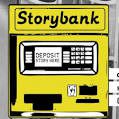 Did you ever sit down to write a batch of thank-you letters and realize, “I don’t know who half of these people are”?
Did you ever sit down to write a batch of thank-you letters and realize, “I don’t know who half of these people are”?
If you’ve gotten married recently, you might know what I mean. There are all those gifts from people who are friends of your parents. You might know them by name…or not. You might recognize their faces…or not.
But they wished you well and sent you a gift.
So you want to thank them. You want to appreciate their time, effort, and expense. But you end up writing a dozen, or two dozen, or a hundred letters that all sound the same. “Why am I doing this?” you think. “Will it make a difference to this person anyway?” And what should be a joy becomes a tiresome duty.
It’s a sad situation. It’s a situation that too many nonprofits find themselves in when they sit down to write thank-you letters to donors.
And it doesn’t have to be that way.
The 3 Things You Need to Write a Great TY
You can make writing a thank-you letter a joy if you prepare in advance. Here are the three things you need to have on hand before you write your TY (or record it on video).Continue Reading


